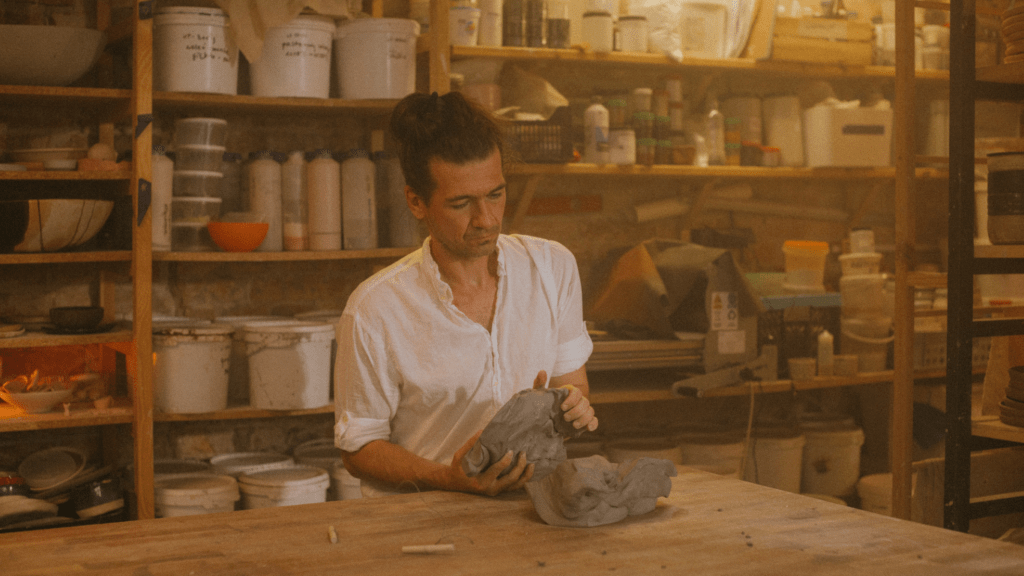Understanding Art Therapy
Art therapy combines psychological theory and artistic expression to address emotional and psychological challenges. It’s a versatile approach used across various settings.
What Is Art Therapy?
Art therapy uses creative methods to foster self-expression. Licensed therapists facilitate sessions where individuals can use painting, drawing, sculpting, or other mediums.
This therapeutic technique supports emotional release, provides insights into one’s thoughts and feelings, and promotes personal growth. Unlike typical art classes, its focus is on the process rather than the final product.
Historical Context and Evolution
Art therapy first emerged in the mid-20th century through pioneers like Adrian Hill and Margaret Naumburg. During the 1940s, Hill used art while recuperating from tuberculosis, noting its therapeutic benefits.
Naumburg, regarded as the “Mother of Art Therapy,” formalized its use in psychotherapy. By the 1970s, the American Art Therapy Association (AATA) was established, further solidifying the field. Today, art therapy integrates both art and psychotherapy, drawing on advancements from psychology and neuroscience.
How Art Therapy Enhances Well-Being

Art therapy positively impacts mental and emotional health. It offers creative expression avenues to uncover and address deep-seated issues.
Emotional Expression and Release
Art therapy enables emotional expression in a non-verbal manner. Through activities like:
- painting
- sculpting
individuals can externalize feelings they find hard to articulate.
This process helps reduce inner turmoil, offering a safe space to confront and manage emotions. For instance, someone might use colors to represent moods, gaining better insight and control over their emotional state.
Stress Reduction and Relaxation Techniques
Engaging in art therapy reduces stress and promotes relaxation. The repetitive actions involved in drawing or molding clay can have a meditative effect, lowering cortisol levels.
These techniques enhance mindfulness, helping individuals focus on the present and alleviate anxiety. For example, constant movements in activities like mandala coloring provide a calming effect, contributing to overall mental peace.
The Science Behind Art Therapy
Scientific research demonstrates how art therapy can positively impact mental health. This occurs through psychological and neurological mechanisms, leading to significant well-being improvements.
Psychological and Neurological Benefits
Art therapy engages both hemispheres of the brain. Creating art activates the right hemisphere, responsible for visual and spatial tasks, while the left hemisphere manages logical thinking and language. This dual engagement fosters better cognitive flexibility and emotional processing.
Studies indicate that art therapy reduces cortisol levels, the body’s stress hormone, leading to decreased anxiety and improved mood. For instance, a 2016 study by Kaimal and Ray reported lower cortisol levels after 45 minutes of art-making.
Engaging in creative activities enhances neuroplasticity—the brain’s ability to reorganize itself. Art therapy stimulates this process, helping individuals develop new ways of thinking and coping with trauma or stress.
Enhanced dopamine release also occurs during art-making. Dopamine is crucial for motivation, reward, and pleasure. Increased dopamine levels can improve mood and foster a sense of accomplishment, essential for mental well-being.
Practical Tips for Integrating Art Therapy into Your Life
Art therapy provides a potent tool to enhance well-being. Practical integration into daily life ensures consistent benefits.
Finding the Right Art Therapist
Selecting a qualified art therapist requires careful research. Verify credentials and certifications from bodies like the American Art Therapy Association (AATA).
Look for experience in addressing specific concerns, such as trauma or anxiety. Schedule initial consultations to gauge comfort levels and therapeutic compatibility. Personal rapport with the therapist fosters a trusting environment, which is crucial for effective sessions.
DIY Art Therapy Activities
- Engaging in DIY art therapy at home offers flexibility and convenience.
- Start with simple activities like drawing your emotions on paper. Use colors that represent specific feelings.
- Collage-making provides another expressive outlet: cut out images and words from magazines to create visual narratives.
- Mandala coloring books facilitate relaxation and mindfulness, aiding in stress reduction.
- Keep a visual journal, documenting daily thoughts and feelings through sketches or doodles.
- Experimenting with various mediums, such as clay or pastels, can reveal new forms of self-expression.
- Practical approaches to incorporating art therapy augment its benefits, integrating creative practices into the fabric of everyday life.

 Anna Freehill, a key contributor to Avant Garde Artistry Hub, plays a vital role in shaping the platform’s vision. As an author and collaborator, she helps bridge the worlds of art and technology, offering insightful articles that guide artists through the rapidly evolving creative landscape. Anna’s dedication to highlighting art's therapeutic value has contributed to the platform’s focus on mental and emotional well-being through creative expression.
Her involvement in building Avant Garde Artistry Hub has been instrumental in providing valuable resources to artists seeking to enhance their careers. Whether through her writing on business strategies or her support in platform development, Anna is committed to fostering a space where artists can thrive and embrace the future of art.
Anna Freehill, a key contributor to Avant Garde Artistry Hub, plays a vital role in shaping the platform’s vision. As an author and collaborator, she helps bridge the worlds of art and technology, offering insightful articles that guide artists through the rapidly evolving creative landscape. Anna’s dedication to highlighting art's therapeutic value has contributed to the platform’s focus on mental and emotional well-being through creative expression.
Her involvement in building Avant Garde Artistry Hub has been instrumental in providing valuable resources to artists seeking to enhance their careers. Whether through her writing on business strategies or her support in platform development, Anna is committed to fostering a space where artists can thrive and embrace the future of art.